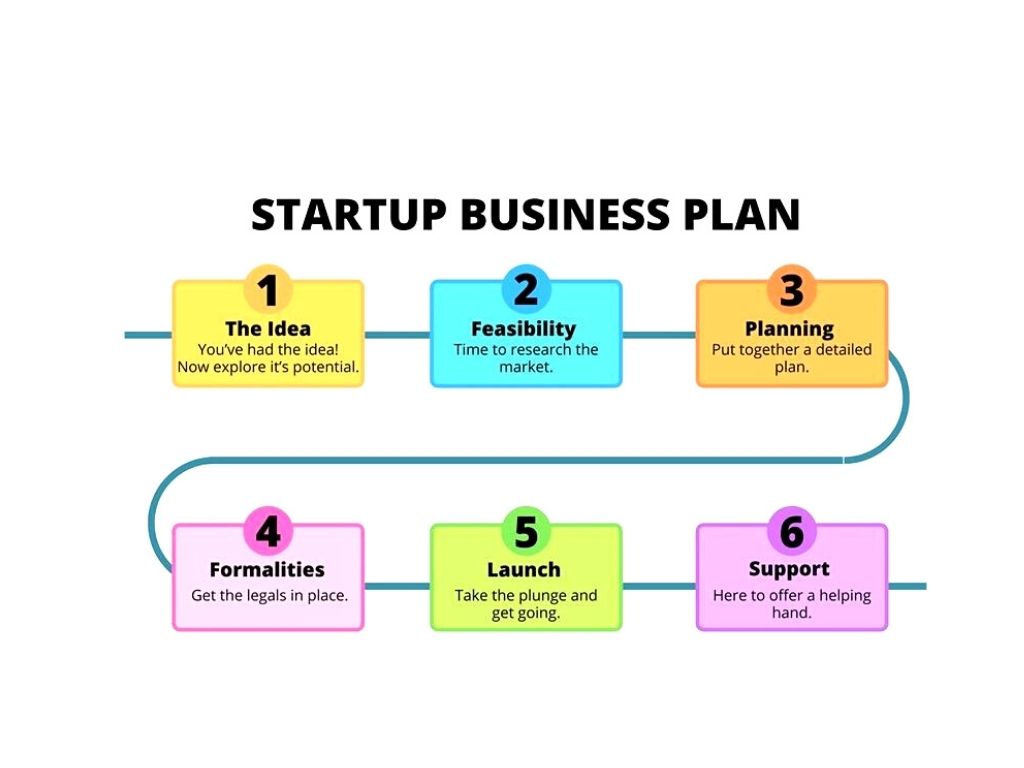Why Buying a Small Business Can Be a Smart Investment
Buying a small business can be a smart investment strategy for entrepreneurs and investors looking to diversify their portfolios. One of the primary benefits of acquiring an existing business is the lower startup costs associated with it. When you buy a small business, you’re essentially purchasing a proven concept, complete with an established customer base, operational infrastructure, and trained staff. This can save you a significant amount of time, money, and resources that would be required to build a business from scratch.
In addition to lower startup costs, buying a small business can also provide a faster return on investment. With an established customer base and revenue stream, you can start generating profits sooner, rather than later. This can be especially appealing to investors who are looking for a quick turnaround on their investment. Furthermore, buying a small business can also provide a sense of security and stability, as you’re acquiring a business with a proven track record of success.
When considering how to find a small business to buy, it’s essential to think about your investment goals and what you hope to achieve through the acquisition. Are you looking for a business that can provide a steady stream of income, or are you looking for a business with high growth potential? Understanding your investment goals will help you focus your search and ensure that you find a business that aligns with your objectives.
Another benefit of buying a small business is the potential for tax benefits. Depending on the structure of the business and the terms of the sale, you may be able to deduct certain expenses, such as depreciation and amortization, from your taxable income. This can help reduce your tax liability and increase your overall return on investment.
Overall, buying a small business can be a smart investment strategy for entrepreneurs and investors who are looking to diversify their portfolios and generate a strong return on investment. By understanding the benefits of acquiring an existing business and focusing your search on businesses that align with your investment goals, you can find a small business that provides a strong foundation for long-term success.
Defining Your Business Acquisition Goals and Criteria
Before starting your search for a small business to buy, it’s essential to define your business acquisition goals and criteria. This will help you focus your search and ensure that you find a business that aligns with your investment objectives. When defining your goals and criteria, consider the following factors:
Business type: What type of business are you interested in acquiring? Are you looking for a retail business, a service-based business, or a manufacturing business? Consider the industry, products, or services that align with your interests and expertise.
Industry: What industry do you want to operate in? Consider the growth potential, competition, and regulatory environment of the industry. Are you looking for a business in a niche market or a more general industry?
Size: What is the ideal size of the business you want to acquire? Consider the number of employees, revenue, and profitability. Are you looking for a small business with a single location or a larger business with multiple locations?
Location: Where do you want the business to be located? Consider the local economy, demographics, and competition. Are you looking for a business in a urban or rural area?
Financial performance: What are your financial goals for the business? Consider the revenue, profitability, and cash flow requirements. Are you looking for a business with a strong financial track record or one that needs improvement?
To create a business acquisition checklist, consider the following steps:
1. Identify your goals and criteria: Based on your research and analysis, identify the key factors that are important to you in a business acquisition.
2. Prioritize your criteria: Rank your criteria in order of importance. This will help you focus your search and make decisions when evaluating potential businesses.
3. Develop a scoring system: Assign a score to each criterion based on its importance. This will help you evaluate potential businesses and compare them to your ideal business.
4. Research potential businesses: Use online marketplaces, business brokers, and networking events to find potential businesses that meet your criteria.
5. Evaluate potential businesses: Use your scoring system to evaluate potential businesses and compare them to your ideal business.
By defining your business acquisition goals and criteria, you can ensure that you find a business that aligns with your investment objectives and provides a strong foundation for long-term success.
Researching and Identifying Potential Businesses for Sale
Once you have defined your business acquisition goals and criteria, it’s time to start researching and identifying potential businesses for sale. There are several methods to find small businesses for sale, including online marketplaces, business brokers, and networking events.
Online marketplaces: Websites such as BizBuySell, BizQuest, and Merger Labs offer a wide range of businesses for sale. These websites allow you to search for businesses by location, industry, and price range. You can also filter your search by criteria such as revenue, profitability, and number of employees.
Business brokers: Business brokers specialize in buying and selling businesses. They often have a wide range of businesses for sale and can provide valuable guidance and advice throughout the acquisition process. You can find business brokers through online directories or by asking for referrals from other business owners.
Networking events: Networking events such as conferences, trade shows, and industry meetings can be a great way to find businesses for sale. You can also use these events to connect with other business owners and learn more about the industry.
When researching potential businesses, it’s essential to evaluate the business’s financial health, market position, and growth potential. You should also consider the business’s management team, employees, and customer base.
To identify potential opportunities, you can use the following strategies:
1. Look for businesses that are undervalued or underperforming. These businesses may offer a great opportunity for growth and profit.
2. Consider businesses that are in a niche market or have a unique product or service. These businesses may have a competitive advantage and offer a high potential for growth.
3. Evaluate businesses that have a strong management team and employees. A well-managed business with a skilled team can be a great opportunity for growth and profit.
4. Look for businesses that have a strong customer base and a proven track record of sales and revenue growth. These businesses may offer a stable and profitable investment opportunity.
By using these strategies and methods, you can find potential businesses for sale that meet your acquisition goals and criteria. Remember to always conduct thorough research and due diligence before making a purchase.
Evaluating the Financial Health of a Small Business
Evaluating the financial health of a small business is a critical step in the acquisition process. It helps you understand the business’s current financial situation, identify potential risks and opportunities, and make an informed decision about the purchase.
When evaluating the financial health of a small business, you should review the following financial statements:
1. Balance sheet: The balance sheet provides a snapshot of the business’s financial position at a specific point in time. It includes assets, liabilities, and equity.
2. Income statement: The income statement shows the business’s revenues and expenses over a specific period of time. It helps you understand the business’s profitability and cash flow.
3. Cash flow statement: The cash flow statement shows the business’s inflows and outflows of cash over a specific period of time. It helps you understand the business’s ability to generate cash and meet its financial obligations.
In addition to reviewing financial statements, you should also assess the business’s cash flow, profitability, and return on investment (ROI). This will help you understand the business’s financial performance and identify potential areas for improvement.
When evaluating the financial health of a small business, consider the following factors:
1. Revenue growth: Is the business’s revenue growing or declining? What are the trends and drivers of revenue growth?
2. Profit margins: What are the business’s profit margins? Are they increasing or decreasing? What are the drivers of profit margin changes?
3. Cash flow: Is the business generating sufficient cash to meet its financial obligations? What are the trends and drivers of cash flow?
4. Debt-to-equity ratio: What is the business’s debt-to-equity ratio? Is it increasing or decreasing? What are the implications of the debt-to-equity ratio for the business’s financial health?
5. Return on investment (ROI): What is the business’s ROI? Is it increasing or decreasing? What are the drivers of ROI changes?
By evaluating the financial health of a small business, you can gain a deeper understanding of the business’s current financial situation and make an informed decision about the purchase. Remember to always conduct thorough due diligence and seek professional advice before making a purchase.
Assessing the Market Value of a Small Business
Assessing the market value of a small business is a critical step in the acquisition process. It helps you determine a fair price for the business and ensures that you’re making a smart investment. There are several methods for valuing a small business, including asset-based, income-based, and market-based approaches.
Asset-based approach: This method values a business based on its assets, such as property, equipment, and inventory. It’s often used for businesses with significant assets, such as manufacturing or retail companies.
Income-based approach: This method values a business based on its income or cash flow. It’s often used for businesses with a stable income stream, such as service-based companies or rental properties.
Market-based approach: This method values a business based on its market value, or what a similar business would sell for in the current market. It’s often used for businesses with a strong market presence, such as restaurants or retail stores.
When assessing the market value of a small business, consider the following factors:
1. Financial performance: What is the business’s financial performance, including revenue, profitability, and cash flow?
2. Industry trends: What are the current trends in the industry, and how will they impact the business’s value?
3. Market conditions: What are the current market conditions, and how will they impact the business’s value?
4. Comparable sales: What are the prices of similar businesses that have sold recently in the same market?
5. Growth potential: What is the business’s growth potential, and how will it impact the business’s value?
By considering these factors and using one or more of the valuation methods, you can determine a fair market value for the small business. This will help you make an informed decision about the purchase and ensure that you’re getting a good deal.
When searching for a small business to buy, it’s essential to consider the market value of the business and ensure that you’re paying a fair price. By doing your research and using the right valuation methods, you can find a great business at a great price and achieve your investment goals.
Due Diligence: What to Look for When Buying a Small Business
Due diligence is a critical step in the process of buying a small business. It involves a thorough examination of the business’s financial, operational, and legal aspects to ensure that you’re making a smart investment. When conducting due diligence, there are several key areas to focus on:
1. Contracts: Review all contracts, including those with suppliers, customers, and employees. Ensure that you understand the terms and conditions of each contract and that they are transferable to the new owner.
2. Leases: Review all leases, including those for property, equipment, and vehicles. Ensure that you understand the terms and conditions of each lease and that they are transferable to the new owner.
3. Employee agreements: Review all employee agreements, including employment contracts and benefits packages. Ensure that you understand the terms and conditions of each agreement and that they are transferable to the new owner.
4. Potential liabilities: Identify any potential liabilities, including outstanding debts, lawsuits, and environmental hazards. Ensure that you understand the nature and extent of each liability and that you have a plan in place to address them.
5. Financial statements: Review the business’s financial statements, including the balance sheet, income statement, and cash flow statement. Ensure that you understand the business’s financial performance and that you have a clear picture of its financial health.
6. Operational systems: Review the business’s operational systems, including its management structure, accounting systems, and IT infrastructure. Ensure that you understand how the business operates and that you have a clear picture of its operational efficiency.
7. Market analysis: Conduct a market analysis to understand the business’s position in the market and its competitive landscape. Ensure that you understand the business’s strengths and weaknesses and that you have a clear picture of its growth potential.
By conducting thorough due diligence, you can ensure that you’re making a smart investment and that you have a clear picture of the business’s financial, operational, and legal aspects. This will help you avoid any potential pitfalls and ensure that you’re well-positioned for success.
When searching for a small business to buy, it’s essential to conduct thorough due diligence to ensure that you’re making a smart investment. By following these steps and doing your research, you can find a great business at a great price and achieve your investment goals.
Negotiating the Purchase Price and Terms
Negotiating the purchase price and terms of a small business sale can be a complex and challenging process. It requires a deep understanding of the business’s financials, market value, and potential for growth. When negotiating the purchase price and terms, consider the following strategies:
1. Determine a fair market value: Use the valuation methods discussed earlier to determine a fair market value for the business. This will give you a basis for your negotiation.
2. Identify the seller’s motivations: Understand the seller’s motivations for selling the business. Are they looking for a quick sale or are they willing to negotiate?
3. Create a negotiation strategy: Develop a negotiation strategy that takes into account the business’s value, the seller’s motivations, and your goals. Consider using a combination of price and terms to negotiate a deal.
4. Be flexible: Be open to creative solutions and alternative deal structures. Consider using earnouts, seller financing, or other creative financing options to negotiate a deal.
5. Use data to support your negotiation: Use data and analysis to support your negotiation. This can include financial statements, market research, and industry trends.
6. Negotiate the terms: Negotiate the terms of the sale, including the purchase price, payment terms, and any contingencies. Consider using a lawyer or other professional to help with the negotiation.
7. Close the deal: Once you have negotiated the terms, close the deal by signing a purchase agreement and completing any necessary paperwork.
When negotiating the purchase price and terms of a small business sale, it’s essential to be prepared and to have a clear understanding of the business’s value and potential for growth. By using the strategies outlined above, you can negotiate a fair deal and achieve your goals.
When searching for a small business to buy, it’s essential to consider the negotiation process and to be prepared to negotiate the purchase price and terms. By doing your research and using the strategies outlined above, you can find a great business at a great price and achieve your investment goals.
Post-Acquisition Integration and Growth Strategies
After acquiring a small business, it’s essential to have a post-acquisition integration plan in place to ensure a smooth transition and maximize growth potential. A well-planned integration strategy can help you achieve your goals and create a successful business.
Cultural alignment: One of the most critical aspects of post-acquisition integration is cultural alignment. It’s essential to ensure that the new business aligns with your existing business culture and values. This can be achieved by communicating with employees, customers, and suppliers, and by implementing a cultural alignment plan.
Operational efficiency: Another key aspect of post-acquisition integration is operational efficiency. It’s essential to review the new business’s operations and identify areas for improvement. This can include streamlining processes, reducing costs, and implementing new technologies.
Growth initiatives: After integrating the new business, it’s essential to focus on growth initiatives. This can include expanding the product or service offerings, entering new markets, and increasing marketing efforts.
Strategies for integration: There are several strategies for integrating a new business, including:
1. Absorption: This involves absorbing the new business into your existing business, including its employees, customers, and operations.
2. Consolidation: This involves consolidating the new business with your existing business, including its operations, finances, and management.
3. Holding company: This involves creating a holding company to manage the new business, including its finances, operations, and management.
4. Joint venture: This involves creating a joint venture with the new business, including shared ownership, management, and operations.
By having a post-acquisition integration plan in place, you can ensure a smooth transition and maximize growth potential. It’s essential to focus on cultural alignment, operational efficiency, and growth initiatives to achieve your goals and create a successful business.
When searching for a small business to buy, it’s essential to consider the post-acquisition integration process and to have a plan in place for integrating the new business. By doing your research and using the strategies outlined above, you can find a great business at a great price and achieve your investment goals.




